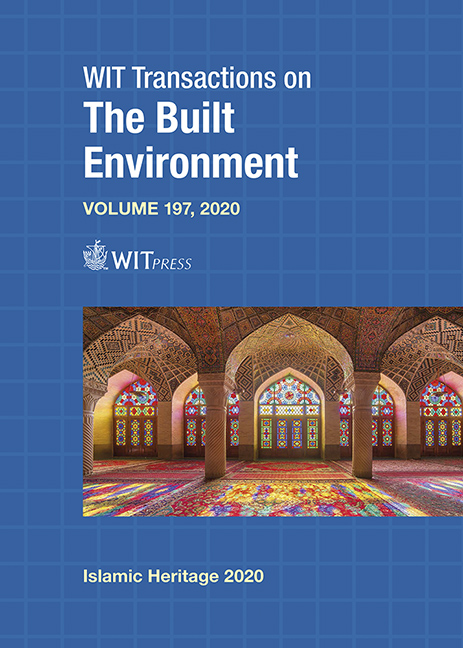GROWTH OF THE HOLY MOSQUE IN MECCA AND THE FIRST LEGISLATION OF HERITAGE CONSERVATION IN SAUDI ARABIA (1955–2010)
Price
Free (open access)
Transaction
Volume
197
Pages
12
Page Range
65 - 76
Published
2020
Size
1,602 kb
Paper DOI
10.2495/IHA200061
Copyright
WIT Press
Author(s)
MOHANAD A. ALFELALI, JOSEP-MARIA GARCIA-FUENTES
Abstract
Mecca city is one of the oldest cities in the world since the first nuclei of the city was laid down more than 3700 years ago by the Prophet Ibrahim, and since that time it has been a sacred city. When the Prophet Mohammed began the call to Islam in 620 AD, the city entered a new era in its history to become the most important religious and commercial centre of the Hejaz. The holy Mosque with its courtyard containing the “Ka’aba” is the most important building not only in Mecca but in the Islamic world, and the “Ka’aba” is considered as the heart of the city. The pilgrimage to the city of Mecca (Hajj) is the fifth pillar of Islam, and unlike pilgrimage in other religions, it is a mandatory character for every member of the faithful who can afford it. For this reason, visitor numbers to Mecca have grown exponentially during the last few decades ranging between 1.5–2.5 million pilgrims per season, peaking to 3.2 million pilgrims in 2012 AD. This trend is closely connected with the different expansions of the holy mosque since 1955 AD, when the first Saudi extension doubled its area. The project was followed by two other major expansions in 1988 and 2010 AD. These projects were done at the cost of destroying some historical neighbourhoods where, however, the historical Ottoman portico has been conserved by a royal decree in 1969 AD. This paper will analyse the expansions of the holy Mosque focusing in the projects that took place in the Saudi rule and discussing how these expansions have affected the urban fabric of the city as well as their impacts in the historical area despite the first legislation of heritage conservation policies approved in 1972 AD by using a mixed approach of gathering data through a literature review as a secondary data and the primary sources which include official and non-official reports as well as government and non-government archive records.
Keywords
Mecca, Saudi Arabia, the Holy Mosque, heritage Conservation, Islamic architecture, Islamic heritage, legislation of heritage conservation, expansions of Holy Mosque




